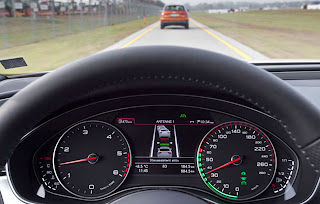 You’re driving on a hot summer day with your windows down
and CD radio player on full-blast. All of a sudden you start to feel something seems
a little off and realize one of your tires is losing air. Whether you decide to
fix the tire yourself on the side of the road or give AAA a call, even the best
Navigation Unit isn’t going to get you to your destination on time. Bridgestone
is hoping to end these situations all-together with their air-free tire
concepts shown here.
You’re driving on a hot summer day with your windows down
and CD radio player on full-blast. All of a sudden you start to feel something seems
a little off and realize one of your tires is losing air. Whether you decide to
fix the tire yourself on the side of the road or give AAA a call, even the best
Navigation Unit isn’t going to get you to your destination on time. Bridgestone
is hoping to end these situations all-together with their air-free tire
concepts shown here.
The color-choice of green would probably be customizable,
but in concept form it alludes to the fact that the materials used are 100% recyclable.
Its recyclable “thermoplastic” internal spokes are what gives these tires all
of their strength and flexibility. The outer rubber on the tire offers a more
traditional tread surface required for use on our sometimes rough roads. One
criticism has been the possibility of noise due to wind resistance in
commercial use. However, if commercialized these tires are expected to be
sealed by a thin sidewall of rubber for these reasons. Each tire also only has
a weight capacity of up to 330 pounds, but innovations to this technology will
undoubtedly be made in the future.
Benefits obviously include the recyclability factor, but they are also safer and less wasteful because they eliminate the risk of punctures. Check out these tires in action on YouTube! (And by “in action”, I mean a girl riding a small scooter equipped with these tires five feet across a stage).
















